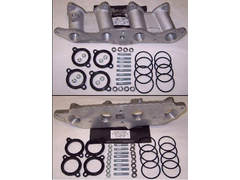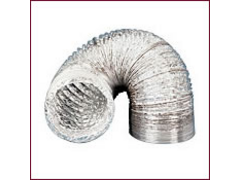Mr Whippy
|
| posted on 4/4/08 at 10:36 AM |

|
|
fridays dumb question :(
Probably a dumb question but why would the long manifold be used? surely the short one is clearly the best to use, no? both are tapped for the
vacuum.
is there any disadvantages to using the short one?
[Edited on 4/4/08 by Mr Whippy]
 
Rescued attachment manifold 3.JPG
Fame is when your old car is plastered all over the internet
|
|
|
|
|
nib1980
|
| posted on 4/4/08 at 10:48 AM |

|
|
inability to create suitable swirl in the mixture in short ones?
|
|
|
jambojeef
|
| posted on 4/4/08 at 11:01 AM |

|
|
Longer runners generally mean more torque - shorter ones more power.
Hence some cars like the 24v BOB Cosworth engines have variable inlet tract length manifolds with a little vacuum operated flap to create a longer
inlet length at lower revs.
|
|
|
Mr Whippy
|
| posted on 4/4/08 at 11:02 AM |

|
|
quote:
Originally posted by nib1980
inability to create suitable swirl in the mixture in short ones?
hmm never thought of that. One thing I notice about the long ones and is putting me off them is there is no heat going into them so apart from the
risk of ice forming I'd have thought the fuel would condense on the inside of the manifold. I’d actually like to use the long ones as it you get
the trumpets outside the side of the bonnet into the fresh air. A bolt on cover was going to shield them in the winter so as to get hot air to prevent
icing. This is for the Falcon by the way.
quote:
Originally posted by jambojeef
Longer runners generally mean more torque - shorter ones more power.
Hence some cars like the 24v BOB Cosworth engines have variable inlet tract length manifolds with a little vacuum operated flap to create a longer
inlet length at lower revs.
never even thought of that either...
[Edited on 4/4/08 by Mr Whippy]
Fame is when your old car is plastered all over the internet
|
|
|
r1_pete
|
| posted on 4/4/08 at 11:11 AM |

|
|
Yep long for torque short for bhp, the latest R1's have variable length trumpets, they shorten for more power high up the rev range.
|
|
|
smart51
|
| posted on 4/4/08 at 11:13 AM |

|
|
the length of the entire inlet tract, from bellmouth inlet to valve seat plus the volume of the cylinder and cylinder head form a resonant system.
The engine speed where cylinder filling is at its best is down to the manifold length.
Long manifolds fill the cylinder best at low speeds giving good pull at lower revs but poor filling at high revs and so lower power.
Short manifolds full the cylinder best at higher speeds. Peak torque will be at a higher engine speed and top end power will be improved.
|
|
|
02GF74
|
| posted on 4/4/08 at 11:16 AM |

|
|
consider the air as springs that are being bounced to and fro within the manifold as the valves open and close.
this helps to get more air into the cylinder and the length of the manifold optimises this process under certain conditions i.e. rpm, cam duration and
so on.
google agrees with me:
(hmm, I better read that now and have a rest after typing all that in ... ...) ...)
the icing occurs inside the carbs as the fuel vapourises - latent heat of vaporisation and all that - it is not gonna freeze in the manifold.
I have run mine in cold weather on twin 40s and no probs whatsoever - the manifold - like the one in the pic is not heated, the wager connection is
for the heater I guess that I have connected to water pump.
quote:
TUNED MANIFOLD
The present invention relates to tuned inlet or exhaust manifolds, being in the case of an inlet manifold intended especially for use in a fuel
injected internal combustion engine.
It is known to tune the length of an inlet manifold in order to set up a standing wave in the branch leading to a cylinder at certain speeds so as to
create a high pressure node at the inlet valve while it is closing so that the density of the intake air and therefore the total charge of air is
increased. Similarly, it is known to tune exhaust manifolds to create a drop in pressure at the instant of valve closing to assist with scavenging.
For a fixed length of each branch, any manifold will only resonate at a certain engine speed and usually manifolds are tuned to provide increased
torque at high speeds. It is however desirable to be able to vary the effective resonant length of the branches of an inlet manifold so that the
branches may resonate at more than one engine speed and thereby provide increased torque over a broader range of engine speed.
As will be generally appreciated, the greater the length of a pipe, the lower the frequency at which it will resonate and manifolds tuned to provide
increased torque in the lower speed range require a great deal of space and present packaging problems. These problems are aggravated if it is further
required to be able to vary the effective resonant length of the branches so that they may resonate at different engine speeds since it is then
necessary to act upon the individual branches in unison.
According to the present invention, blah blah blah irrelevant blah blah
[Edited on 4/4/08 by 02GF74]
|
|
|
Mr Whippy
|
| posted on 4/4/08 at 11:44 AM |

|
|
groan and there's me thinking it was simple...
looks like the long one is the winner then after all, glad I asked 
wonder if I could make my own variable length one out of this stuff 
cheers guys for the help  
 
Rescued attachment flexibleducting.jpg
Fame is when your old car is plastered all over the internet
|
|
|













